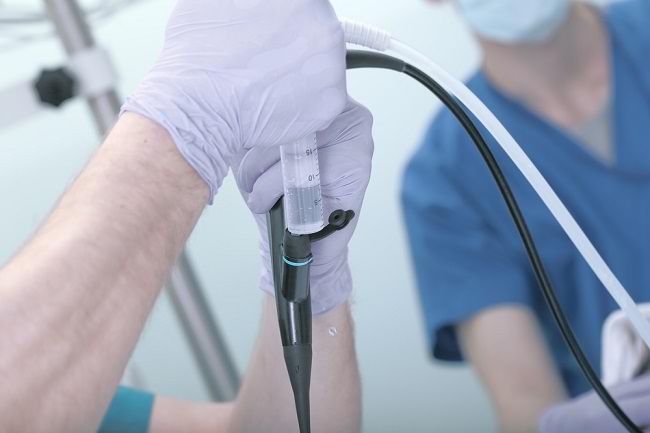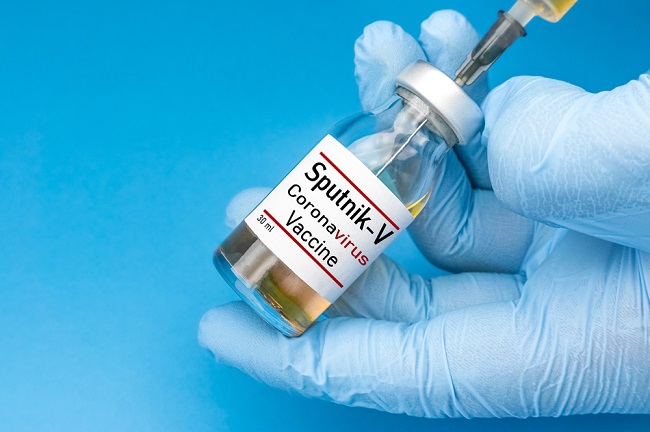Cystoscopy is a procedureto check condition channel urine and bladder. Cystoscopy can also be done to examine and help treat patients with bladder stones or bladder cancer.
Cystoscopy is performed using a cystoscope, which is a small tube-shaped instrument equipped with a light and camera at the end. The camera will take pictures of the urinary tract (urethra) and bladder of the patient to be displayed on the monitor screen.
There are two types of cystoscopes that can be used in cystoscopy, namely flexible cystoscopes and rigid cystoscopes. The flexible cystoscope is only used to observe the patient's urinary tract, while the rigid cystoscope is used to assist in the treatment of diseases in the urinary tract.
Cystoscopy Indications
Generally, the doctor will perform a cystoscopy to:
- Find out the cause of recurrent urinary tract infections
- Check the cause of uncontrolled urination, pain when urinating, or the presence of blood in the urine
- Diagnosing bladder stones, prostate enlargement, bladder inflammation (cystitis), and bladder cancer
- Helps treat bladder stones or tumors, urethral stricture (urethral stricture), and overactive bladder
Cystoscopy Warning
The following are some things to know before undergoing a cystoscopy:
- Cystoscopy is not performed on patients who are suffering from urinary tract infections.
- The patient may experience some discomfort when urinating after the cystoscopy, but this will usually go away within a few days.
- Some drugs can cause heavy bleeding during cystoscopy. Therefore, tell your doctor if you are taking certain medications.
- In patients who are under local anaesthesia, pain and the urge to urinate will occur when the cystoscope is inserted.
Before Cystoscopy
Before undergoing a cystoscopy, there are several things the patient should know, including:
- The doctor will examine the patient's urine sample to determine if the patient is suffering from a urinary tract infection. The cystoscopy procedure will be postponed if the patient is diagnosed with the condition.
- In patients who suffer from urinary tract infections or have a weak immune system, the doctor will prescribe antibiotics before and after the cystoscopy.
- For patients who will undergo cystoscopy under general anesthesia, it is advisable to invite family members to accompany them before and after the cystoscopy.
- The patient will be asked to fast for several hours before the cystoscopy.
Cystoscopy Procedure
Before the procedure begins, the patient will be asked to change into special clothes that have been prepared by the doctor. The following are the steps in the cystoscopy procedure:
- The doctor will ask the patient to lie on the operating table with the legs bent and wide apart.
- The doctor will give a local anesthetic that keeps the patient awake during the procedure, or a general anesthetic that makes the patient fall asleep during the procedure. In patients who are given local anesthesia, the doctor will also give a sedative to relax the patient during the cystoscopy procedure.
- The doctor will clean the patient's genital area using an antiseptic and apply gel to the urinary opening to reduce pain during the process of inserting the cystoscope.
- The doctor will slowly insert the cystoscope into the lower urinary tract called the urethra. The camera attached to the cystoscope will send images to a monitor screen, so the doctor can see the condition of the urethra and bladder.
- If necessary, the doctor will insert a sterile fluid into the bladder, so that the resulting image becomes clearer. If this process is performed, the patient may experience an uncomfortable sensation or the urge to urinate.
- The doctor will insert a rigid, large cystoscope when taking a tissue sample from the urethra or bladder. This act of taking a tissue sample is called a biopsy.
The length of the cystoscopy procedure depends on the type of anesthesia used. Cystoscopy using local anesthesia usually lasts less than 5 minutes, whereas cystoscopy under general anesthesia can take anywhere from 15-30 minutes.
After Cystoscopy
The doctor can immediately notify the results of the cystoscopy examination after the examination is complete. However, if the patient also underwent a biopsy at the time of cystoscopy, the results of the examination may only be notified by the doctor 2-3 weeks later.
Normal cystoscopy results showed that there were no problems with the shape, size, and position of the bladder. On the other hand, abnormal cystoscopy results can indicate health problems such as the following:
- Bladder stones
- Cysts in the bladder
- Bladder cancer
- Disorders of the prostate gland
- Inflammation of the urethra (urethritis)
- Inflammation of the bladder (cystitis)
- Narrowing of the urinary tract (urethral stricture)
- Foreign body in the urethra or in the bladder
- Birth defects of the urinary system
Patients who undergo cystoscopy under local anesthesia can return to their normal activities. However, patients who receive general anesthesia must rest first until the effects of the anesthetic wear off and need to be taken home by family or relatives.
After undergoing a cystoscopy, the patient will generally experience pain when urinating. To relieve it, the patient can apply a warm compress to the pubic area. If needed, the doctor can prescribe pain relievers, such as paracetamol or ibuprofen.
Patients are also advised to drink a lot to urinate more often, so that irritation in the bladder is reduced.
Risk Cystoscopy
Cystoscopy is a safe procedure. However, in some cases, cystoscopy has the risk of causing the following side effects:
- Infections due to the entry of bacteria into the urinary tract, especially in elderly patients and smokers
- Stomach pain and burning when urinating, but usually mild and will subside gradually
- There is a small amount of blood in the urine, especially in patients undergoing a biopsy during cystoscopy
Immediately go to the nearest hospital emergency room if the following complaints appear after undergoing a cystoscopy:
- Fever
- Shivering
- Nauseous
- Unbearable stomach pain
- Difficult or unable to urinate
- Pain when urinating that does not go away up to 2 days after cystoscopy
- Urine is bright red or dark










